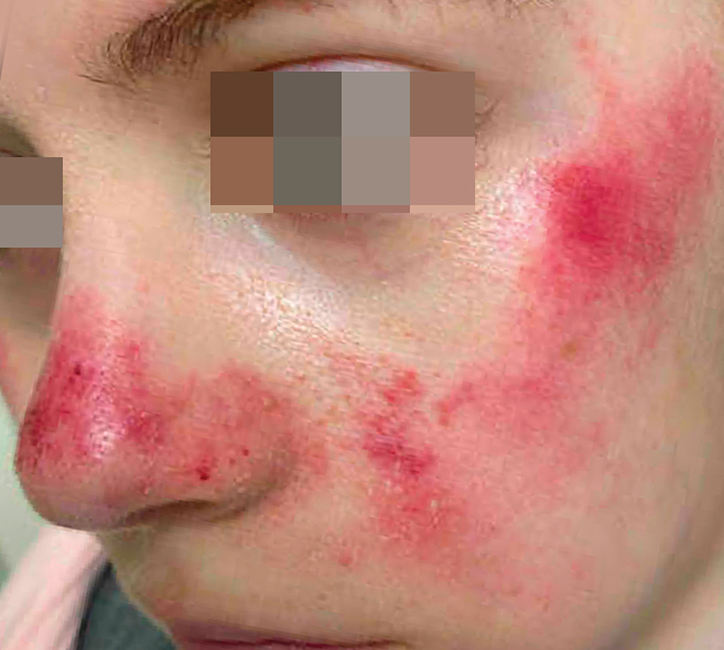Phototoxic eruption secondary to doxycycline treatment for MEK inhibitor-induced acneiform dermatitis.

Downloads
DOI:
https://doi.org/10.26326/2281-9649.32.4.2404How to Cite
Seervai R.N.H., Ophaug S.L., Dhossche J., Conrady C., Miller M.B., Leitenberger S.L. 2022. Phototoxic eruption secondary to doxycycline treatment for MEK inhibitor-induced acneiform dermatitis. Eur. J. Pediat. Dermatol. 32 (4):222-6. 10.26326/2281-9649.32.4.2404.
pp. 222-6
Abstract
Acneiform rash is the most common dermatologic toxicity associated with small-molecule inhibitors (Nibs) targeting the MAPK/ERK kinase MEK. Here, we present the case of a patient with pilocytic astrocytoma who developed a phototoxic eruption after doxycycline treatment for trametinib-induced acneiform rash, requiring discontinuation of her cancer therapy. Photosensitivity reactions associated with Nibs are unrelated to their kinase activity. We propose use of doxycycline as the indirect mechanism linking this type of dermatologic toxicity in pediatric cancer patients receiving MEK inhibitor therapy.
Keywords
MEK, pilocytic astrocytoma, doxycycline, acne, phototoxicity
